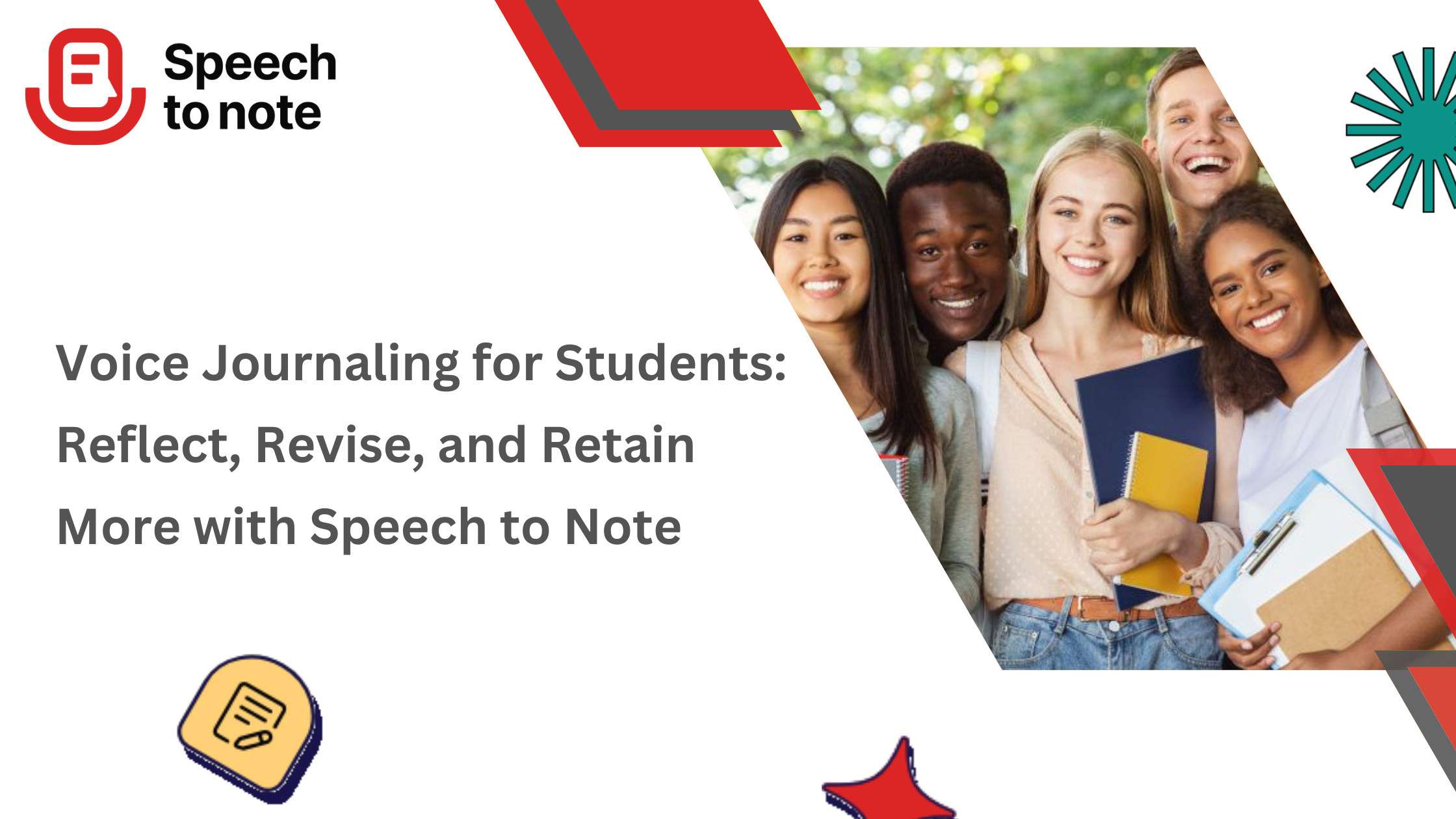Let’s be honest—writing everything down is exhausting. Whether it’s summarizing lectures, capturing random ideas, or reflecting on what you’ve learned, typing or scribbling can feel like a chore. That’s where voice journaling steps in, and it’s changing the way students learn, think, and retain information.
The idea is simple: you talk, and your device does the writing. Using speech to text, students can now turn spontaneous thoughts into organized notes—without losing that spark of creativity that often fades when you’re focused on typing.
Why Voice Journaling Works Better Than You Think
Here’s the thing—our brains process spoken words differently than written ones. Speaking activates different areas of memory and emotion, which makes reflection more natural and less forced. When you talk through what you’ve learned, you’re not just recording information; you’re reinforcing it.
Think of those moments after a tough lecture when you’re trying to make sense of everything. Instead of staring blankly at your notes, imagine recording your thoughts: “Okay, the professor said the mitochondria are the powerhouse, but what does that really mean for cell metabolism?” You talk it out. Later, using a tool like notes with voice, you can review and convert those insights into clear, organized text. It’s efficient, and it feels personal.
From Reflection to Retention
Reflection isn’t just about revisiting what you learned; it’s about understanding how you learned it. When you use notes on speech, you give your brain a second chance to connect ideas and recognize gaps. Studies have shown that students who review material verbally retain up to 50% more than those who rely only on written repetition.
Voice journaling builds on that idea. It’s not just a record of your thoughts—it’s a conversation with yourself. You start noticing patterns in your understanding, the areas you struggle with, and the topics that excite you. Over time, your recordings become a personal learning archive, capturing your growth in real time.
A Real Example: The Student Who Stopped Typing
Take Maya, a college sophomore juggling psychology, sociology, and a part-time job. She used to spend hours rewriting lecture notes, trying to make sense of scattered ideas. Then she started using Speech to Note.
Now, after every class, she talks through what she’s learned during her walk back to the dorm. The app transcribes her thoughts instantly using speech to text technology. Later, she reviews those notes before exams—already summarized, organized, and searchable. She calls it “studying without sitting still.” And she’s not alone. Thousands of students are realizing that speaking is often the fastest route to clarity.
The Secret Sauce: Thinking Out Loud
Here’s what most people don’t realize—speaking out loud forces you to think differently. It’s spontaneous, honest, and closer to how you actually process ideas. When you rely on your voice instead of your fingers, you remove friction between thought and expression.
That’s what makes the speak writer concept so powerful. It lets you capture ideas at the speed of thought. You could be walking, cooking, or commuting and still be building your academic library—hands-free.
You’re not just saving time; you’re engaging your brain in a deeper, more meaningful way.
Reflection isn’t just about revisiting what you learned; it’s about understanding how you learned it. When you use notes on speech, you give your brain a second chance to connect ideas and recognize gaps. Studies have shown that students who review material verbally retain up to 50% more than those who rely only on written repetition.
Voice journaling builds on that idea. It’s not just a record of your thoughts—it’s a conversation with yourself. You start noticing patterns in your understanding, the areas you struggle with, and the topics that excite you. Over time, your recordings become a personal learning archive, capturing your growth in real time.
Tips for Getting Started with Voice Journaling
-
Start small. Record short reflections after a lecture or study session. Don’t aim for perfection—just talk.
-
Tag your recordings. Add keywords or course names so you can find them later.
-
Review weekly. Spend ten minutes reading or listening to your entries. You’ll notice how your understanding evolves.
-
Experiment. Try summarizing your textbook chapters or brainstorming essay ideas out loud.
If you’re curious about how it works in action, check out this demo video. Seeing it in use makes it click.
The Bottom Line
Voice journaling isn’t just a fancy study trick—it’s a smarter way to learn. You reflect deeply, revise naturally, and retain more information without burning out. Using tools like Speech to Note and speech to text, you turn your voice into a learning asset.
So, if you’ve ever felt stuck staring at a blank page, try speaking instead. Let your thoughts flow, capture them, and turn them into something tangible. Your future self—especially the one cramming for finals—will thank you.
Download Speech to Note today and start your voice journaling journey:
-
Apple App Store
-
Google Play Store
You might just find that your voice is the best study tool you’ve ever had.
